Companion Animal Science Exam 1
1/113
There's no tags or description
Looks like no tags are added yet.
Name | Mastery | Learn | Test | Matching | Spaced |
|---|
No study sessions yet.
114 Terms
Five Steps of the Scientific Method
Make an Observation
Hypothesis
Experimentation
Analysis → do the results support the hypothesis?
Conclusion
What is an abstract?
the “summary” of a research article
includes the steps of the scientific method in relation to the particular research
What is a “breed” of animal?
A relatively homogeneous group of animals within a species, developed and maintained by man.
Breed Clubs and Dog Clubs
AHBA = American Herding Breeds Association
AKC = American Kennel Club
UKC = United Kennel Club
RBR = Rare Breeds Registry
Parent breed clubs
How many recognized dog breeds are there?
approximately 400 recognized breeds worldwide
different clubs recognize different breeds:
e.g.: the AKC recognizes 200 breeds
What are the AKC Dog Groups?
Sporting
Hound
Working
Terrier
Toy
Herding
Non-sporting
Miscellaneous
Breed Varieties
A division of a breed for show purposes, based on coat type, size, or color
may be interbred
e.g., Cocker spaniels: Black (including black with tan points), ASCOB (any solid color other than black), or Parti-Color
How are disparate dog breeds judged at the AKC?
parent breed clubs provide breed standard descriptions that the AKC judges use
What are the AKC disqualifications for a Dalmatian?
any dog over 24 inches at the withers
overshot or undershot bite
any color markings other than black or liver
tri-color patches
Sporting dogs
setters, spaniels, and pointers
often seen as “hunting/retrieving” dogs
examples: Weimaraner, Clumber Spaniel, Irish Water Spaniel, Labrador Retriever, Gordon Setter
Hound dogs
two types: sight and scent hunters
sight dogs hunt with eyesight → “lure chase” competition
scent dogs use their sense of smell → “hide-&-seek” competition
Examples: Bloodhound, Borzoi, Rhodesian Ridgeback, Dachshund, Bluetick Coonhound
Working dogs
pulling, protection, and guarding
Examples: Akita, Doberman Pinscher, Great Pyrenees, Alaskan Malamute, Dogue deBordeaux
Terriers
also known as “vermin catchers”
Examples: Bedlington terrier, Scottish terrier, Staffordshire Bull Terrier, Airedale Terrier, Parson Russel Terrier, Wire-Haired Fox Terrier
Toy dogs
“lap dogs” → originally used for drawing fleas away from humans
Examples: Brussels Griffon, Chinese Crested, Pomeranian, Shih Tzu, Italian Greyhound
Herding dogs
livestock-moving dogs
Examples: Border Collie, Bearded Collie, Puli, Belgian Tervuren, Australian Cattle Dog
Non-Sporting dogs
miscellaneous → approved breeds, but don’t fit into another group
Examples: French Bulldog, ChowChow, Dalmatian, Poodle, Keeshond, Tibetan Terrier
Miscellaneous dogs
breeds not fully recognized, but working towards AKC recognition (need petitions)
Examples (2023): Dutch Shepherd, Lancashire heeler, Peruvian Inca Orchid, Teddy Roosevelt Terrier, Japanese Akitainu, Small Musterlander
Weimaraner
Sporting category
only solid color → silver, blue, gray
smooth, short coat
no breed variations
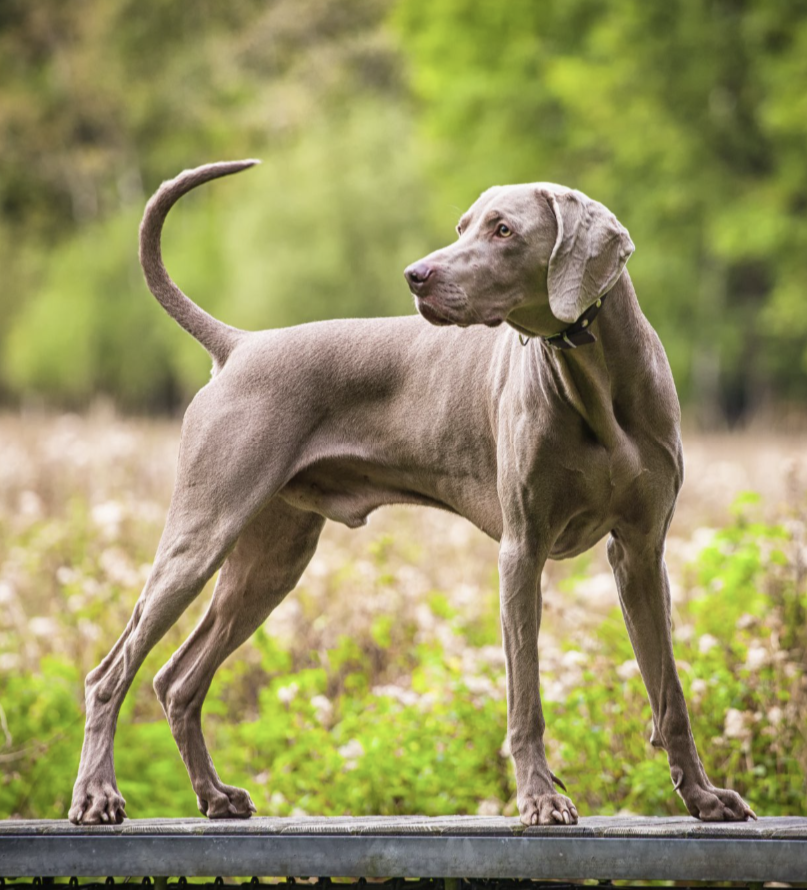
Irish Water Spaniel
Sporting category
curled coat; protects the dog from getting waterlogged
Only allowed color: liver
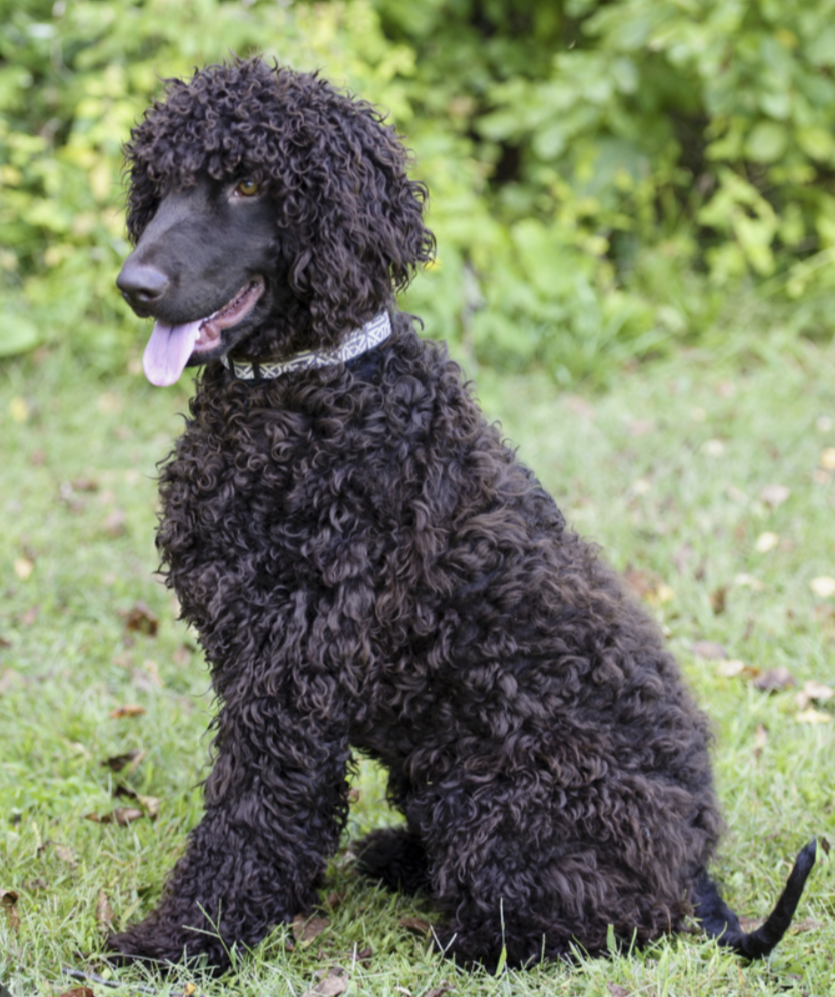
Labrador Retriever
Sporting category
#1 AKC breed for 31 years (until 2022)
Acceptable colors: yellow, black, chocolate
“silver” color is disqualified
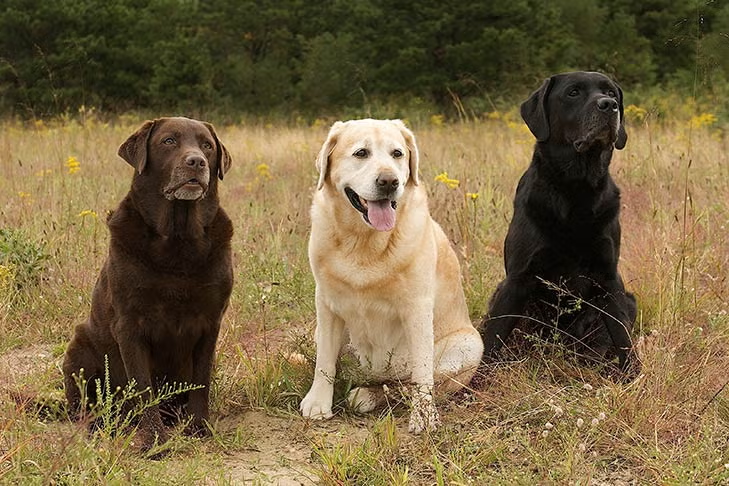
Bloodhound
Scent Hound category
large, floppy ears stir up leaves → excellent nose
bad eyesight
Colors: black and tan, liver and tan, and red
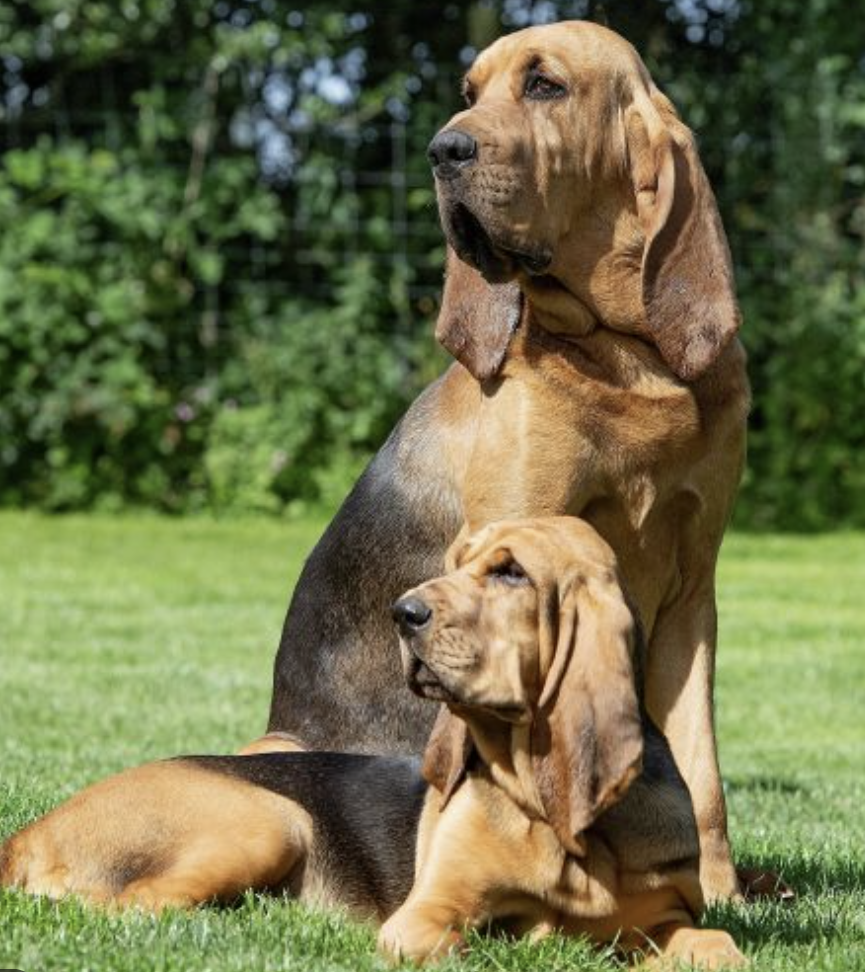
Borzoi
Sight Hound category
dolichocephalic → long, skinny nose allows for better vision
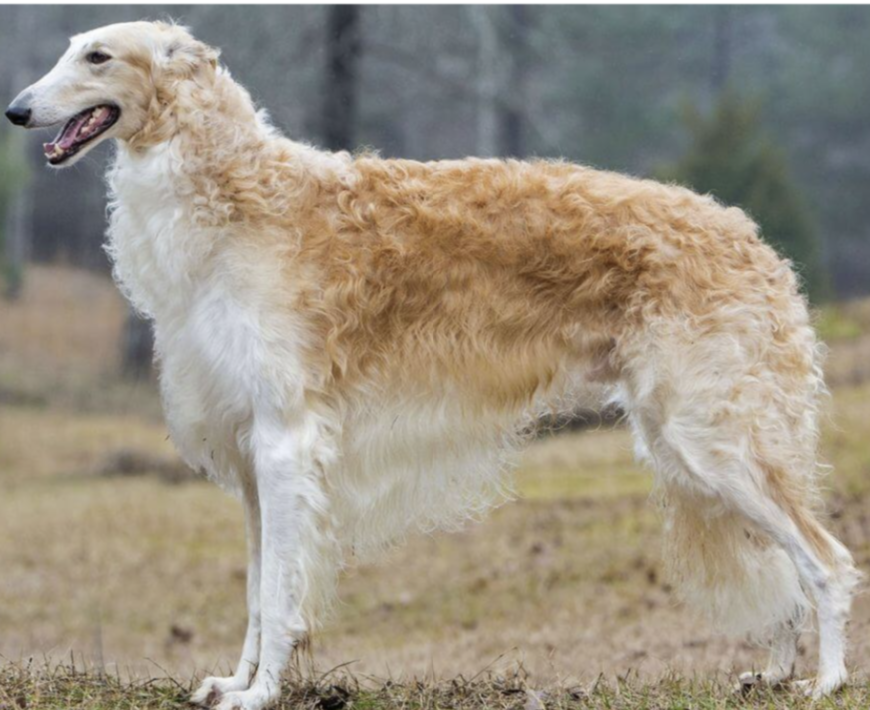
Doberman Pinscher
Working: Protection category
developed in the late 1800s by a tax collector
recent changes: allowed to have either cropped or natural ears
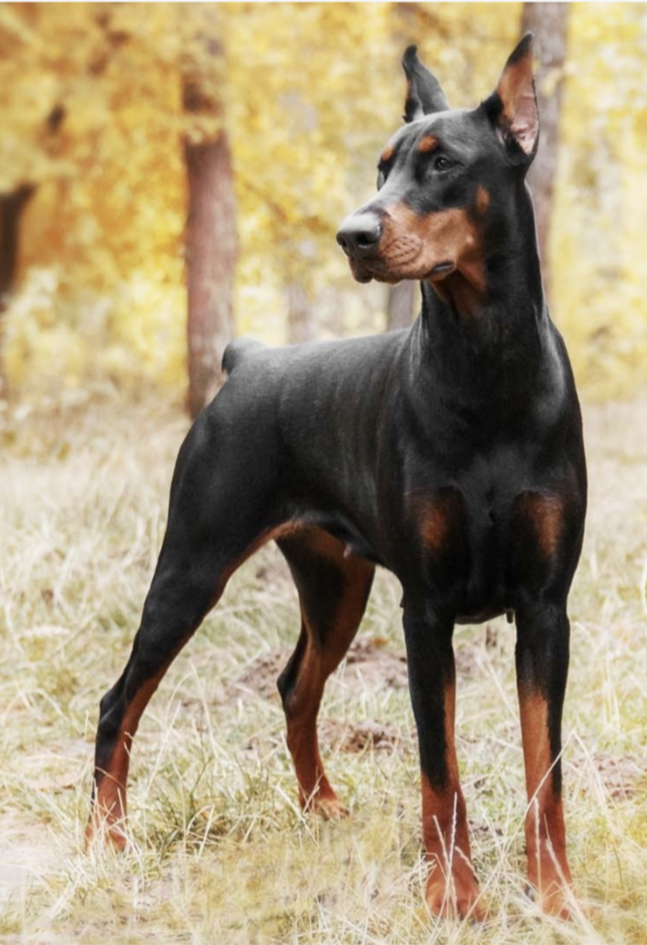
Alaskan Malamute
Working: Pulling category
never have blue eyes, only brown (unlike huskies)
also, much larger and blockier than huskies
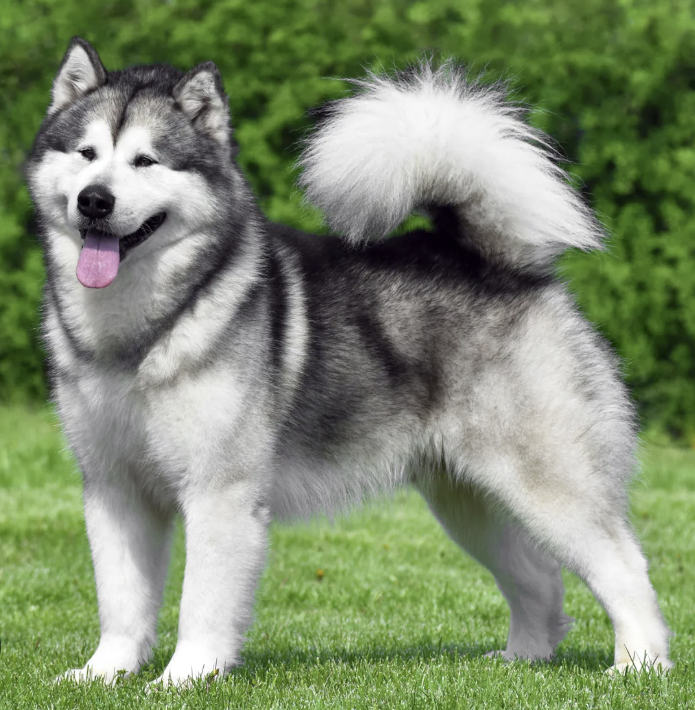
What is a “Pit Bull”?
a group of “Terrier”-type dogs: include American Pit Bull Terrier, Bull Terrier, American Bulldog, and Staffordshire Terrier
originally bred to fight other dogs in “pits”
strong jaws and broad heads
cropped ears → made them harder to bite
the breed is banned in many areas → due to the fact that most fatal dog attacks are from pit bulls
Chinese Crested Dog
Toy category
typically hairless dogs
hair that does grow is fragile and brittle
these genes affect teeth growth as well
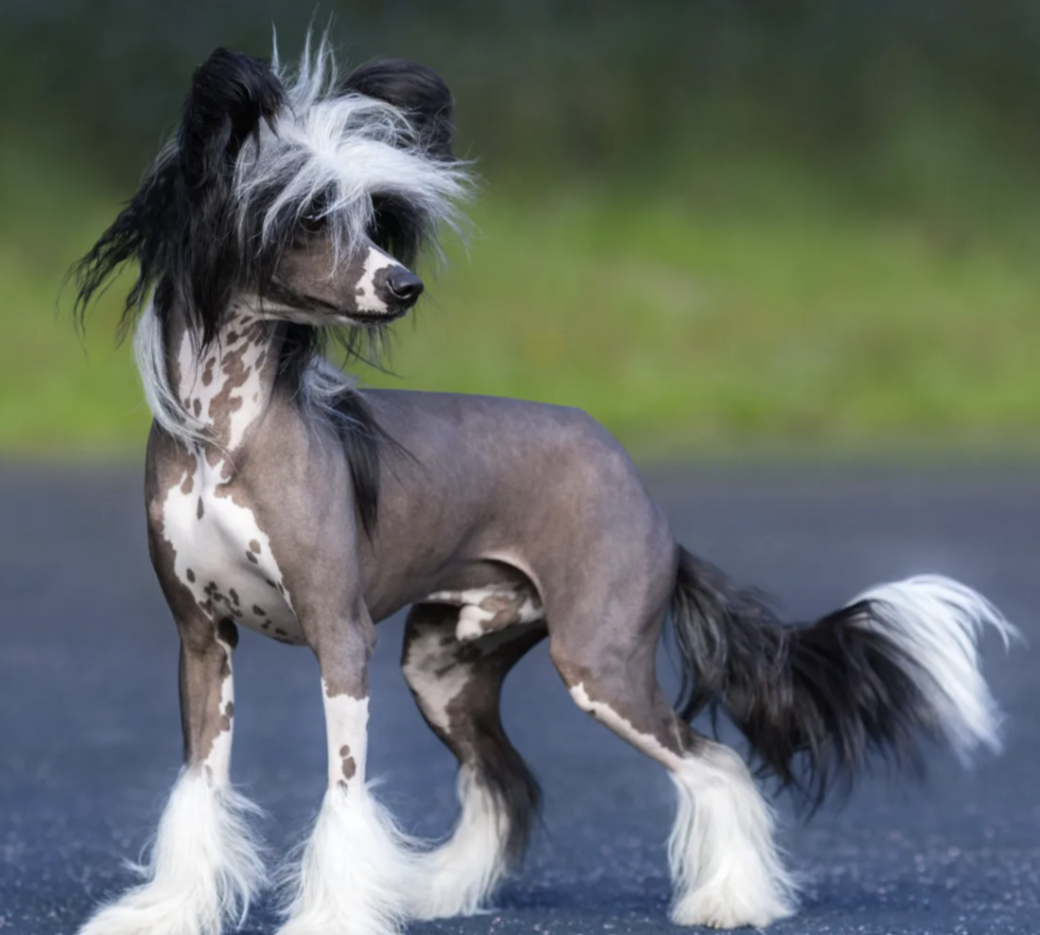
Puli Dog
Herding category
coat “cords” develop naturally, and they are not supposed to be groomed
these cords protect the dogs from predators like wolves
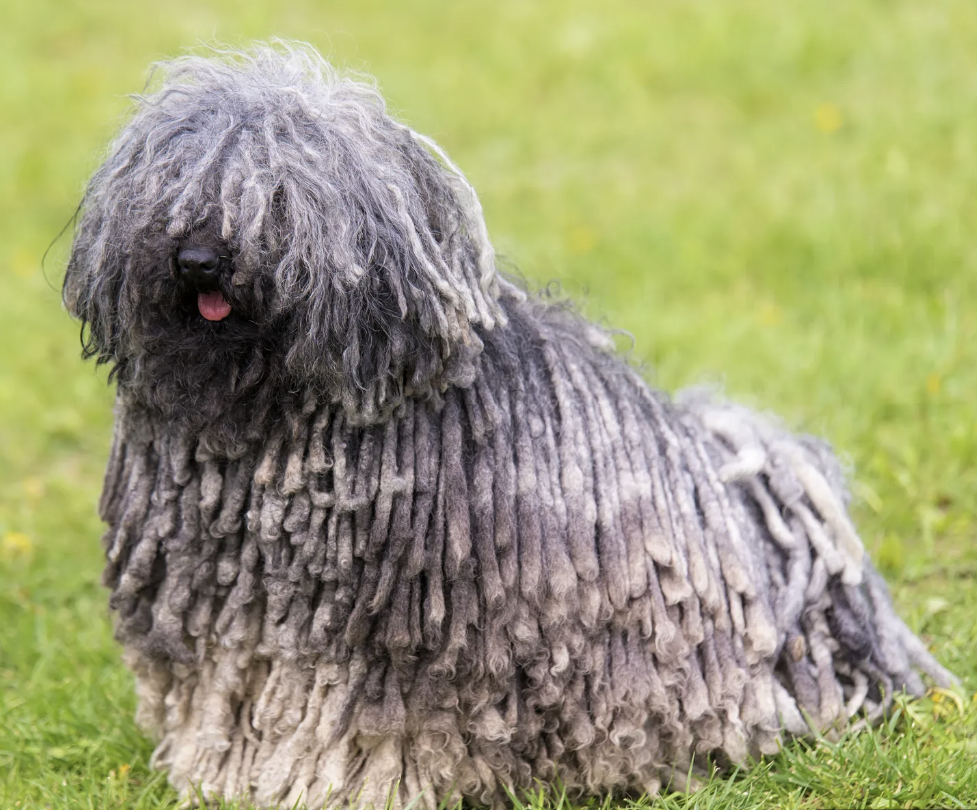
Newest AKC Breeds as of 2020-2022
Biewer Terrier → terrier category
Belgian Laekenois → herding category
Dogo Argentino → working category
Barbet → sporting category
What are horses used for?
Primarily:
Recreation
Competition
Equine Therapy
Work/Transportation (only 10-15% of use)
Equine Industry
Worldwide:
about 60.5 million horses
the United States is the top producer
US Horses:
most horse owners only own a few horses (2 av.)
Horse Training
~2 years — start under saddle, training to carry riders
Training continues for a few years
~5—15 years = prime for riding
Retirement in mid- to late-20s
Average weight of a horse
1,100 to 1,200 lbs
What age do horses stop growing?
On average, 4-6 years
What is the life span of a horse?
25-30 years
the longest-lived horse was 62 years old
smaller horse = longer lifespan
What do horses need?
Foraging space
Free access to water
Other horses herd animals (cows or goats)
Wind block/shelter (horses prefer 35-40 degree temps)
Exercise
What are the nutritional requirements for a horse?
Fresh grass diet = 150 lbs/day
Hay diet = 35 lbs/day
Water = 10-12 gal/day (can increase with temperatures or if lactating)
What three things should one do before getting a horse?
Involve equine professionals
Start with lessons or teaching
Have a veterinary examination
How many horse breeds are there?
Over 350 breeds
Categories of Horse Breeds
Purebred → usually registered; often used for competition/showing
Crossbred
Grade → not registered; ancestry mostly unknown
What are the different types of horse breeds?
Draft
Pony
Light horses (three types)
Saddle
Hunter
Stock
Draft Horses
large and broad, bred to pull heavy loads
known for their strength, endurance, and calm temperament
Examples: Clydesdale, Percheron, Belgian Draught, Brabant horse
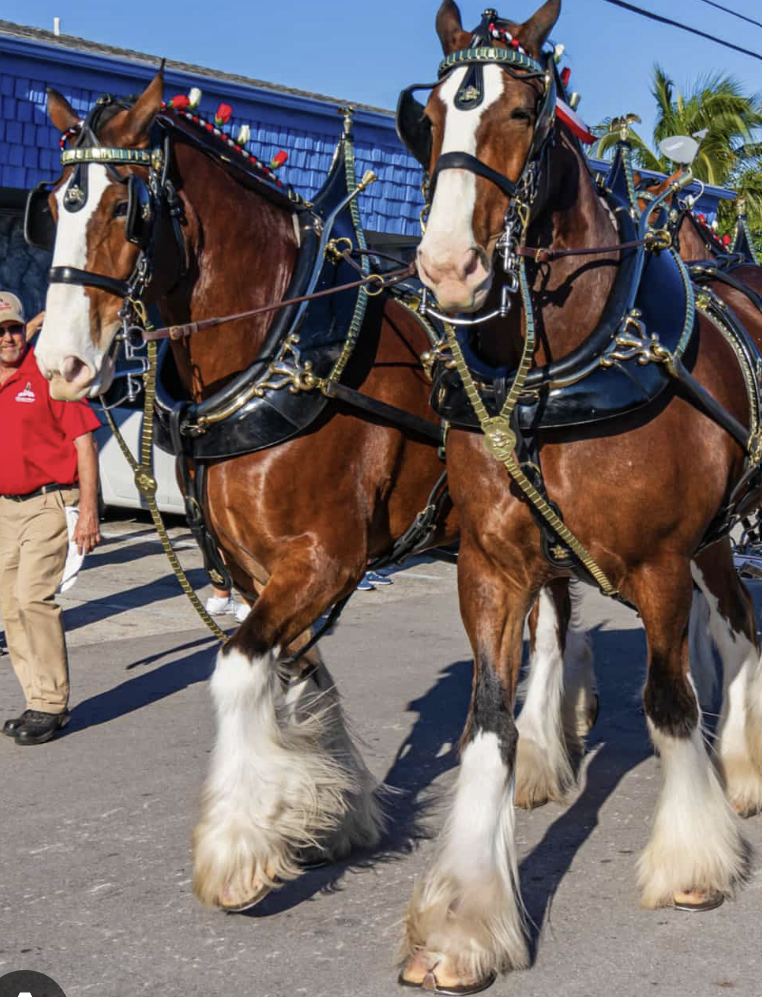
Ponies
used in tight mine shafts or as children’s mounts
smaller than other horses
Examples: Welsh pony, Shetland pony
Saddle-type Horses
often very tall
showy in movement and head carriage
originated from war horses
Hunter-type Horses
used for English fox hunting
good endurance runners and high jumpers
very tall
Stock horses
developed as a riding horse in America
able to outrun and herd cattle → bred for sprinting, not endurance
lower to the ground, greater body mass
Which horse breed has the largest equine registry in the world?
American Quarter Horse
Which is the oldest horse breed?
Arabian horse
originated in 5000 BCE
dished face, one less vertebrae than other horses
good endurance, used in desert environments
American Bashkir Curly Horse
originated in North America
likely formed due to a genetic abnormality
hypoallergenic
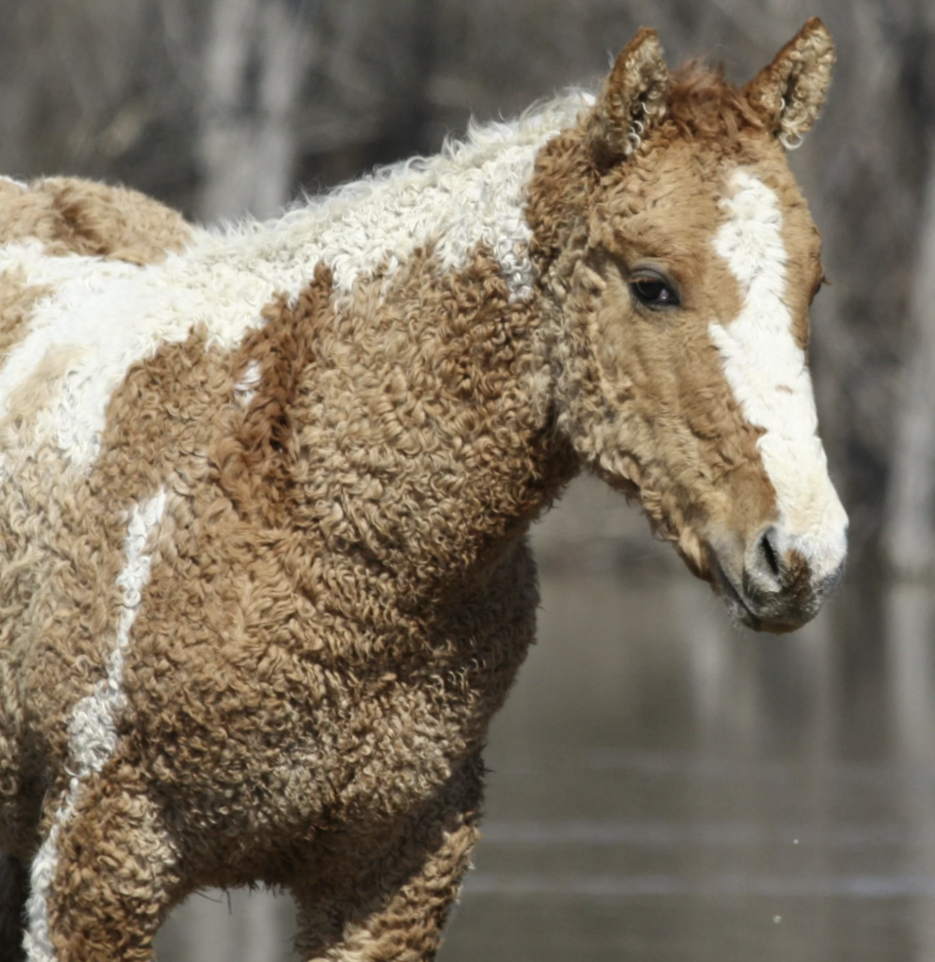
Marwari Horse
originated from India → used by royalty
characteristic curled ear tips
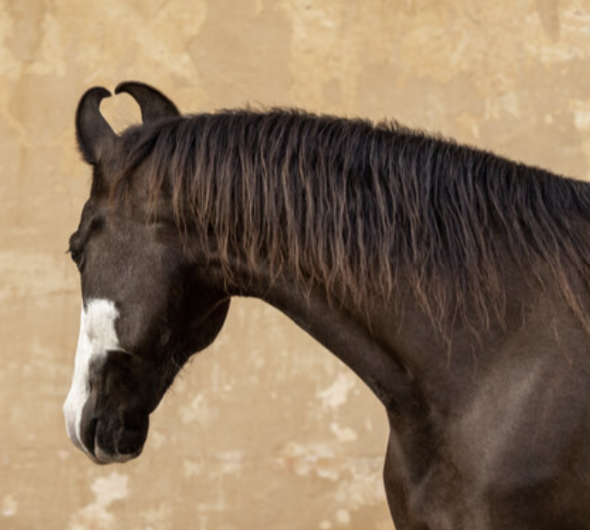
Horse Color Registries
breed doesn’t matter → horses only categorized by color
three registries: Pinto, Palomino, Buckskin/Dun
Cold- vs. Hot-blooded Horses
Terms depend on what parts of the world they were developed in
Cold-Blooded horses
includes draft horses
thicker hide → less sensitive
developed in colder regions
Hot-blooded horses
include hunter-type and some saddle-type horses
developed from warhorses
selected for reactivity and athleticism → more sensitive to cues
Warm-blooded horses
hot-blooded + cold-blooded
includes: American Quarterhorse
bred for endurance, speed, size, and bone structure
European warm-bloods go through a very expensive inspection process to get officially registered
Donkeys
developed in mountainous regions
different prey instinct → hard-wired to freeze when unsure instead of flee (known as “stubborn”)
types: miniature, standard, large standard, and mammoth
Mules
donkey sire + horse dam
more athletic than hinnies
state animal of Missouri
Mizzou’s mules are crossbreeds of donkeys and draft horses
Hinny
donkey dam + horse sire
sterile
smaller and less athletic than mules
Zebroids
Zonkey/Z-donk = zebra + donkey
Zony = zebra + pony
all hybrids are sterile
Gelding vs. Stallion
Geldings:
castrated male horses
used for population control and temperament
Stallions
intact male horses
don’t make good riding horses and should only be owned by professionals
often unpredictable, especially around mares
Why are mares often not spayed?
the process is more invasive
spaying is not used for population control, gelding is
mares often show “heat behavior” constantly if spayed
Pedigree horse records
most useful with young animals
help determine what work they are most suitable for
important for breeding
Performance horse records
heavily relied upon with riding aged horses
important for breeding
shows what the horse is already capable of doing
How is a horse measured?
measured to the tallest part of the withers (top of shoulder blades)
measured in “hands” → 1 hand = 4 inches
How much weight can a horse carry?
Can carry up to 20% of their body weight (tack included)
Physical Selection of Horses (Conformation)
Balance: Body symmetry
Structure: Skeletal Alignment and Angles
Movement: Soundness and Style
General Appearance: Breed Characteristics
Horse Conformation: Balance
front-to-back symmetry
equal across three parts
should have level or uphill top line (downhill would put more weight on front legs)
look for short back compared to underline (should not be equal)
head and neck are proportional to body (longer neck = more balance)
Horse Conformation: Skeletal Structure
weight should be evenly distributed across all four legs
(side view) = legs should be angled, not straight → angles act as shock absorbers
(front view) = legs should appear straight
Oxytocin release in companion animals
observed and studied in dogs and cats
not seen in animals like reptiles or pocket pets
birds don’t release oxytocin, but they do release similar hormones
What is an individual animal’s purpose?
To survive, eat, and reproduce
What do snakes usually need when they are traversing the length of their cage?
If all other needs are met, they need security (they feel agitated or unsafe)
How has the exotic animal industry changed?
got more popular during the COVID-19 pandemic
largest request: parrots that could talk
unfortunately, many people returned or abandoned their pets after the pandemic
Why can large birds be difficult pets?
they are very long-lived
pair-bonded/social birds → get very lonely if by themselves
a lack of socialization with other birds can cause psychological effects (stress, repetitive behavior, plucking)
an aviary is ideal, with indoor and outdoor structures
Cage requirements for reptiles
Bare minimum: width = length of animal, length = 2x length of animal
Reptile/Exotic animal smuggling trade
many popular species that are legally available in the United States were originally smuggled into the country (ex: Bearded dragons)
smuggling fueled a large part of the reptile industry
ex: German reptile industry
Kaiser newts
native to Iran → found in snowmelt mountain streams
live in inhospitable environments, with a very low number left in the wild
black with an orange belly and yellow-white spots
originally smuggled into the US; now, able to get them legally and cheaply in the US instead
serves as a type of conservation (smugglers no longer need to take them from their native habitat)
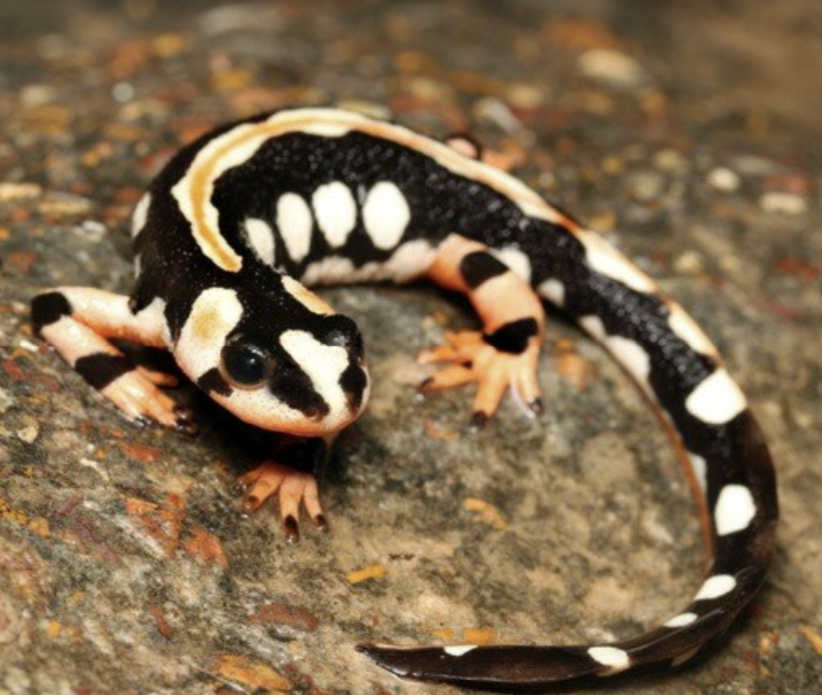
Chinchillas
live for about ~20 years (long lifespan for a pocket pet)
social animals → much more active if there is more than one
expensive due to long gestation (117 days)
kits weaned at 6-7 weeks, but kept with mother for 10 weeks
mothers get 8 weeks of recovery before breeding again
only have 1-2 kits at a time
Domestication of dogs
dogs are the longest-domesticated animal (>1000 yrs)
prehistoric cave paintings depicted dogs with humans → likely a source of companionship, protection, and/or food
ancient Greeks and Romans kept dogs as pets, not just for hunting, but for companionship
most prolific type of dog depicted: Melitan
Melitan
by far the most prolific miniature dog in artistic depictions and literary sources from history
Greek: Melitaion kunidion (little dog); Latin: Melitaeus catulus (puppy)
breed no longer exists
likely an ancestor of spitz-type dogs
Mau
means “cat” or “sun” in Ancient Egypt
the Egyptians revered cats as gods
Dogs in Mesopotamia
dog saliva was considered medicinal → they saw that when dogs licked their wounds, it promoted healing
Gula = Babylonian goddess of healing; patroness of doctors, healing arts, and medical practices
Pets in Egypt
dogs and cats were highly valued as family members → when the pet would die, if the family was able to afford it, they would have the dog/cat mummified and shave their eyebrows in grief
export of cats from Egypt was strictly prohibited → a government branch was formed to deal solely with this issue
government agents were dispatched to other lands to find and return cats that had been smuggled out
by 450 BCE, the penalty for killing a cat was death
Dogs in China
the shih tzu or “lion dog” is depicted in art and architecture throughout China
generations of Chinese Emperors kept dogs → sucked as puppies by human wet nurses and tended to by servants
What is the definition of “pet”?
A domestic or tamed animal kept for companionship or pleasure and treated with care and affection
Origination of the word “pet”
likely derived from the French word “petit”, meaning small
word was first applied to indulged or spoiled kids, but by the mid-16th century, it included animals as well
these animals were often runts of family livestock and were raised by hand with special attention
these animals were playmates for children on remote farms → frequently given names and generally avoided slaughter
Definition of “companion animals”
Species that have a special relationship with humans, are partially or totally dependent on them, live in close proximity with people, and go a step further in bonding with their owners
Origination of the term “companion animals”
Latin: Com and panis = with bread → we share bread (food) with our pets and in turn receive their companionship
Motives for acquiring companion animals
mostly social motives: companionship, childrearing considerations, tactile contact, attachment, responsibility
other motives: familiarity/routine, usefulness, feeling sorry for animals, aesthetic value, uniqueness of animal, social contacts, “need for power”
Top reasons why people would NOT acquire a companion animal:
Allergic → 14%
No time → 32%
Dwelling not suitable → 25%
Summary: “10 Reasons You Need a Pet”
Companionship
Having a routine
Exercise
Less stress
Outdoor activities
Making new friends
New interests
Protection
Taking care of something
Investing in Life
Pets as companions
with pet ownership, there is a marked increase in social contact
pets are not only wonderful companions, but they also act to break down communication barriers
81% of owners say they never feel alone when they are with their pet
Social capital
the “glue that holds society together”
the building of social capital is known to have positive effects on the health and economic viability of a society
Schutzhund
German for “protection dog”
a dog sport that was developed in Germany in the early 1900s as a breed suitability test for the German Shepherd Dog
today, it is used as a sport where many breeds can compete
tests dogs for the traits necessary for police-type work → evaluates tracking, obedience, working, and protection skills
Military dogs
enrolled in a 60-90 day training program in which they learn how to detect explosives and drugs
also taught how to defend their handlers in the event of an attack
dogs can often break teeth while biting → able to insert titanium fangs
replacement costs between $600-2,000 per tooth
can help a dog continue its service, but are not as stable as real teeth
Tactical body armor
adjustable, lightweight suits protect the dog’s vital organs and come in an array of models depending on the animal’s line of duty
Dogs’ sense of smell
dogs have about ~300 million olfactory receptors in their noses (humans have 6 mil)
brain region devoted to analyzing smells is proportionally 40x greater than humans’
Canine drug and substance detection
dogs are able to deconstruct an odor into its components, picking out the culprit chemicals it has been trained to detect
involves the use of specially trained dogs, commonly golden or Laborador retrievers
trained to both detect the scent and alert authorities (pawing at nearby surface or sitting)
Police dogs
Greeks, Persians, Babylonians, and Assyrians were the first cultures to use dogs for policing
US police dogs were first used in 1907 in New York City
first K9 dogs were German Shepherds
most popular breed, known for size, intelligence, and work ethic
second most common breed: Belgian Malinois
Other popular breeds: Labrador Retriever, Bloodhound, Beagle, Rottweiler
Customs and Border Protection (CBP) Canine Training Program
primary goal: terrorist detection and apprehension
secondary goal: detection and seizure of controlled substances and other contraband, often used to finance terrorist and/or criminal drug trafficking operations
also assist local law enforcement agencies when requested
Search-and-Rescue Dogs
popular breeds: Border Collie, German Shepherd, Bloodhound, Labrador Retriever
work with FEMA
tasks: area search, trailing, land cadaver/human remains detection (land or water), avalanche detection, first responder disaster (live or cadaver detection)
Fire Dogs
the tradition of Dalmatians in firehouses dates back more than a century
nowadays, they mainly serve as mascots
before, they used to be carriage dogs → ran alongside horses and protected them from being spooked or attacked by other animals